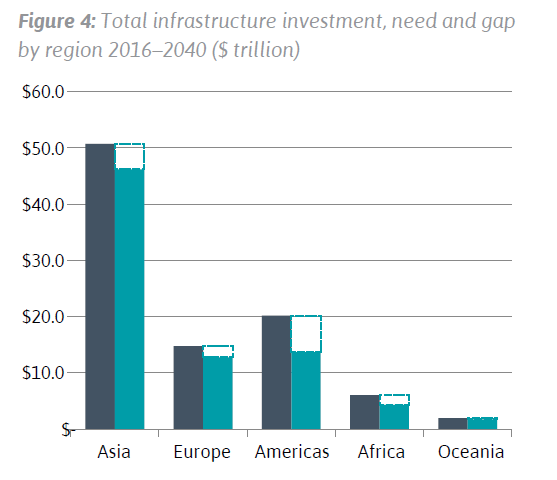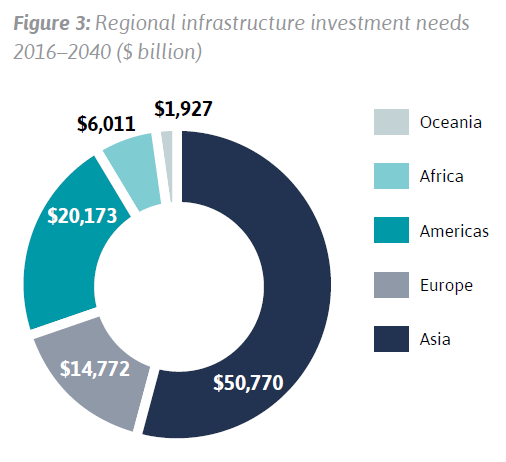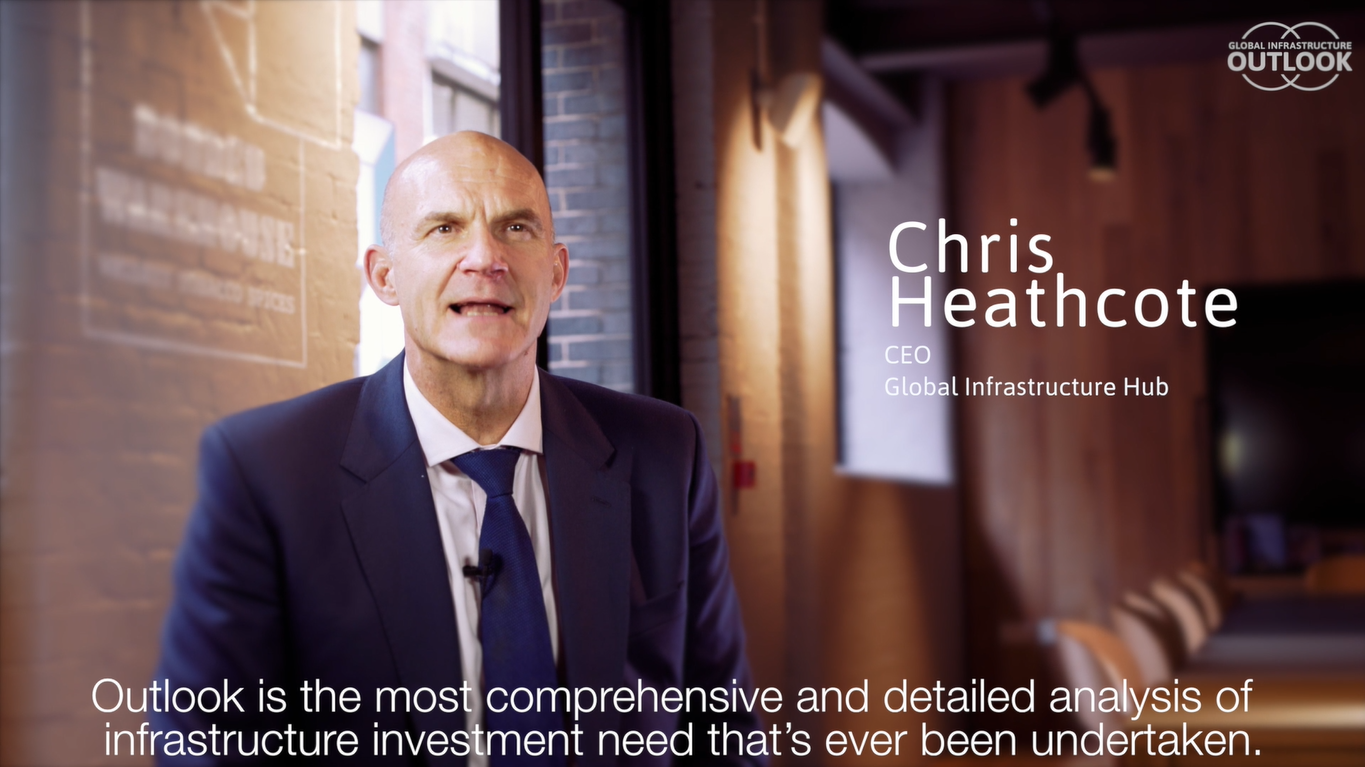Global infra investment need to reach $97 trillion by 2040
The Global Infrastructure Hub (GI Hub) was launched in 2014 with a G20 mandate to increase the flow and the quality of opportunities for public and private infrastructure investment. It works to facilitate a better supply of quality, bankable government infrastructure projects to the private sector, identifying reforms, planning approaches and risk management strategies that drive public-private partnership and investment into infrastructure.
The report, Global Infrastructure Outlook, reveals the cost of providing infrastructure to support global economic growth and to start to close infrastructure gaps is forecast to reach $94 trillion by 2040, with a further $3.5 trillion needed to meet the UN Sustainable Development Goals (SDGs) for universal household access to drinking water and electricity by 2030, bringing the total to $97 trillion.

Outlook, which can be accessed through an online tool, also reveals that $18 trillion – almost 19 per cent – of the $97 trillion, will be unfunded if current spending trends continue.
Every year $3.7 trillion will need to be invested in infrastructure to meet the demands of an accelerating global population, the equivalent of the total annual GDP of Germany, the world’s fourth largest economy. And in order to meet the water and electricity SDGs, the investment need forecast increases by an additional $236 billion per year until 2030, when the goals are due to be met.
This is not just a major challenge for emerging countries that need to create new infrastructure, but also for advanced countries that have ageing systems that have to be replaced.

The US will have the largest gap in infrastructure spending, at $3.8 trillion, while China will have the greatest demand, at $28 trillion, representing a massive 30 per cent of global infrastructure investment needs.
The ultimate achievement of the SDGs by 2030 is reliant on the provision of quality infrastructure. On current trends, investment will fall substantially short of meeting SDGs for water and electricity.
The report suggests that Asia, excluding China, will invest $19.7 trillion between 2016 and 2040 under current trends. This increases by 13 per cent to $22.4 trillion under the investment need scenario, or just under $900 billion per year.
Vietnam is forecast to meet 83 per cent of its infrastructure investment needs. The largest gap is in the roads sector which requires an extra 70 per cent in investment to meet forecasted needs. To meet SDGs, Vietnam needs a major increase in water investment. Total investment needs including SDGs almost double existing infrastructure investment trends.
Outlook is a world leading project that includes a detailed analysis and online tool. It is the result of an intensive study of 50 countries and seven industry sectors by the GI Hub and Oxford Economics, the leader in global forecasting and quantitative analysis.
“Outlook is a comprehensive and detailed analysis of infrastructure investment need. It gives the new country and sector spending data that governments and funding organisations have been calling for,” said Global Infrastructure Hub's CEO Chris Heathcote. “Outlook tells us three key things, how much each country needs to spend on infrastructure to 2040, where that need is for each infrastructure sector, and what their gap is, based on their current spending trends."

"Most significantly it advises governments and the private sector on where the greatest needs are, and how much should be spent to provide infrastructure for communities in the future. We believe this information will be key to governments, and indeed those organisations that fund, plan and build infrastructure projects into the future – and providing sustainable cities with social and economic benefits for all,” he added.
What the stars mean:
★ Poor ★ ★ Promising ★★★ Good ★★★★ Very good ★★★★★ Exceptional
Latest News
More News
- 72 nations sign landmark Hanoi cybercrime convention (October 26, 2025 | 18:00)
- UN Secretary-General commends Vietnam’s global leadership (October 26, 2025 | 09:00)
- APEC finance ministers convene to tackle regional challenges (October 22, 2025 | 17:31)
- Rewiring global trade: ASEAN’s rise as supply chain hub (October 17, 2025 | 11:40)
- Vietnam attends first World Nuclear Week Forum in Russia (September 26, 2025 | 10:50)
- Vietnam attends 69th session of IAEA General Conference (September 16, 2025 | 10:00)
- ADB, WB pledge over 12 billion USD for ASEAN power grid, renewable energy projects (August 15, 2025 | 14:18)
- Lowy Institute proposes AI-based tobacco control solutions for ASEAN (August 15, 2025 | 14:14)
- Cloud computing policy to position Malaysia as regional hub by 2030 (August 15, 2025 | 14:11)
- Thailand, Cambodia suffer numerous cyber attacks (August 05, 2025 | 16:19)

















 Mobile Version
Mobile Version